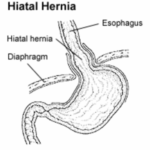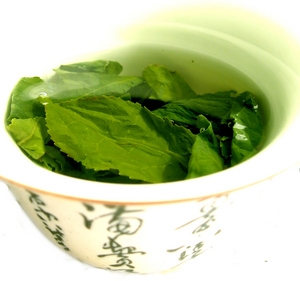Hiatal hernias are present in approximately 15% of the population.
After years of living with mild but irritating stomach issues, I was finally diagnosed with a hiatal hernia in my early twenties. At first I was nervous: What was a hiatal hernia? Was it a serious condition? How, if at all, would it affect my day-to-day living? After making a few minor lifestyle changes, and following my doctor’s advice, I soon realized my condition wasn’t as serious as I originally thought.
What is a hiatal hernia? A hiatal hernia occurs when a portion of the upper stomach slips up (herniates) into the opening of the esophageal hiatus (hiatal opening) then into the chest.
What causes hiatal hernias: Sometimes, hiatal hernias are present from birth or infancy; however, in most cases, they are believed to have developed over many years. According to MedicineNet.com the three most common causes for hiatal hernia are:
- A larger-than-normal esophageal hiatus, which the upper stomach can “slip” through into the chest;
- A permanent shortening of the esophagus, which pulls the stomach up; or
- An abnormally loose attachment of the esophagus to the diaphragm which allows the esophagus and stomach to slip upwards.
Other known factors include heavy lifting, bending, violent coughing or vomiting, inflammation of the esophagus or upper stomach, obesity, poor seated posture (such as slouching), straining with constipation, heredity, smoking, congenital defects.
Are there different types of hiatal hernia? There are two types of hiatal hernia: (a)Sliding hiatal hernias: These are the most common. In this case, the junction of the esophagus (the structure at the bottom of the esophagus that attaches to the stomach) and a portion of the stomach protrude into the chest. The junction may reside permanently in the chest, but often it juts into the chest only during a swallow. When the swallow is finished, the herniated part of the stomach falls back into the abdomen; and (b) Para-esophageal hiatal hernias: These are not as common. In this case, the gastroesophageal junction stays where it belongs, but part of the stomach passes or bulges into the chest beside the esophagus. If the hernia is large, it could impede the passage of food into the stomach causing food to stick in the esophagus after swallowing.
What are symptoms of hiatal hernia? For most people, a hiatal hernia by itself causes no symptoms. The most common symptom is acid reflux but others reported include:
• Chest pain or pressure
• Heartburn
• F eeling of fullness, even after small meals or drinking
• Coughing
• Belching
• Hiccups
Although most people don’t experience any pain, a hiatal hernia has been known to cause chest pain or upper abdominal pain when the stomach becomes trapped above the diaphragm through the narrow esophageal hiatus. As well, with a fixed hiatal hernia, the blood supply is cut off to the portion of the stomach that’s trapped, which can also cause great pain and serious illness. This could turn into a condition known as strangulated hiatal hernia, and one should seek immediate medical attention if this is suspected.
How is hiatal hernia diagnosed? A hiatal hernia is usually diagnosed with a specialized X-ray. The patient swallows a white liquid called barium which illuminates the digestive tract so the technician can study the esophagus (barium swallow). The other, more intrusive diagnostic procedure is called an endoscopy. In this case, a tiny camera is fed down through the esophogus through the mouth to observe the esophogus and upper stomach.
How can I care for my hiatal hernia? Simple lifestyle changes are often enough to help avoid the uncomfortable symptoms of hiatal hernia. First, patients should modify their activities by minimizing heavy lifting, straining, or bending over; improving posture; doing more stretching-type of exercises (yoga; lose excess weight; sleep on an incline with head of bed raised four to six inches; and choosing standing activities after a meal rather than sitting or reclining.
Modifications to diet can also help. Patients with hiatal hernia should avoid caffeine, chocolate, fried or fatty foods, peppermint, and alcohol. It’s also suggested not to eat meals within two to three hours of bedtime and not eating large meals but, rather, eating smaller more frequent meals throughout the day. I’ve lived with a hiatal hernia for more than half of my life now. Although I was initially nervous about having to live with this condition, a few small lifestyle and diet changes have helped to ease my symptoms allowing me to enjoy a regular, active life.
______________________
SOURCES:
MedicineNet.com – Hiatal Hernia: Treatment, Causes and Treatment
EMedicineHealth.com







